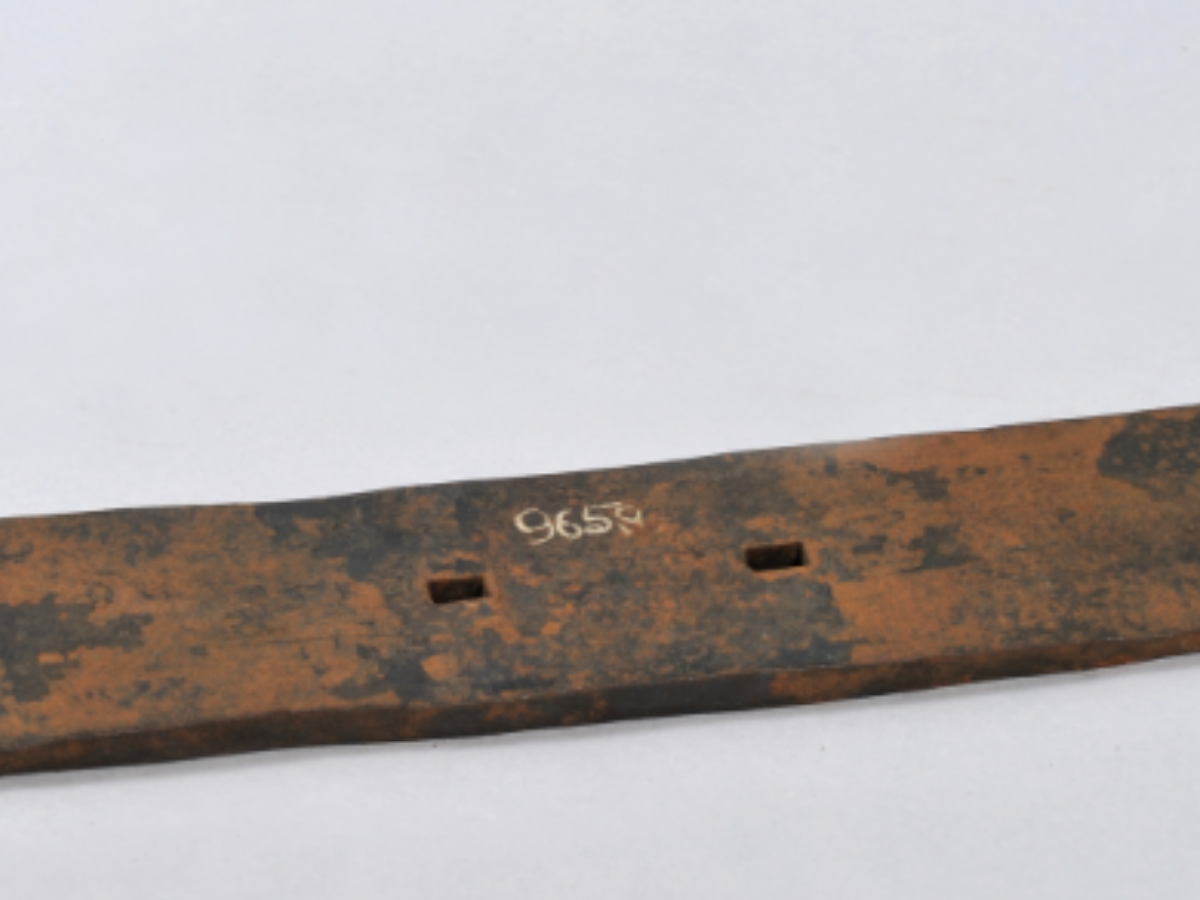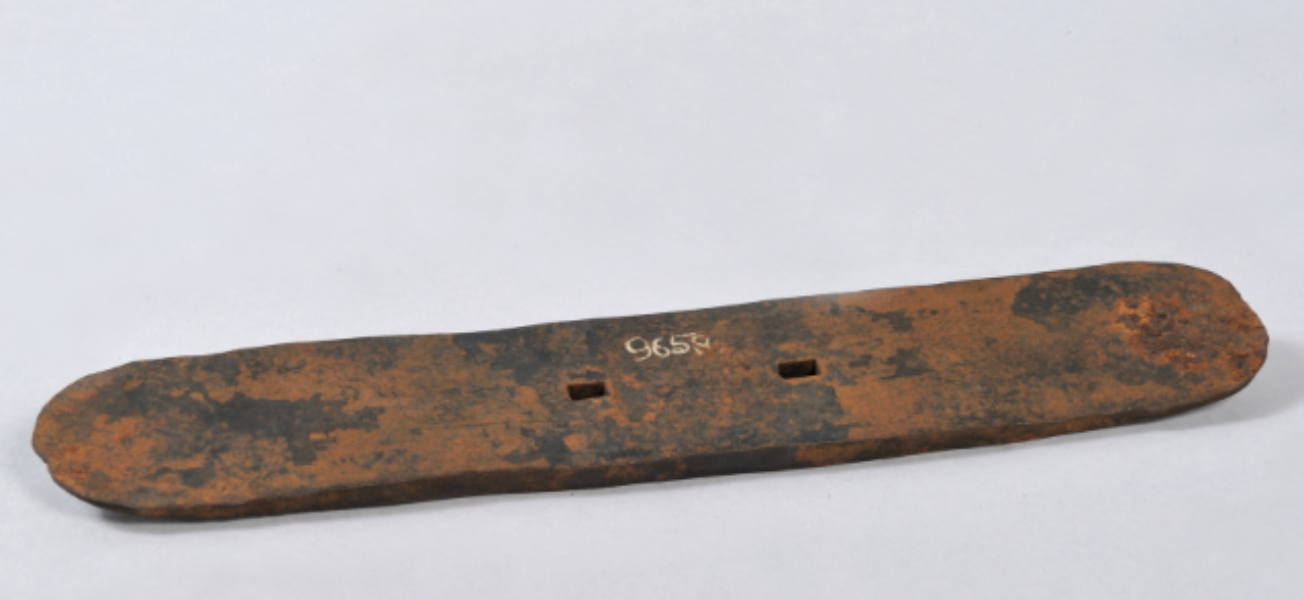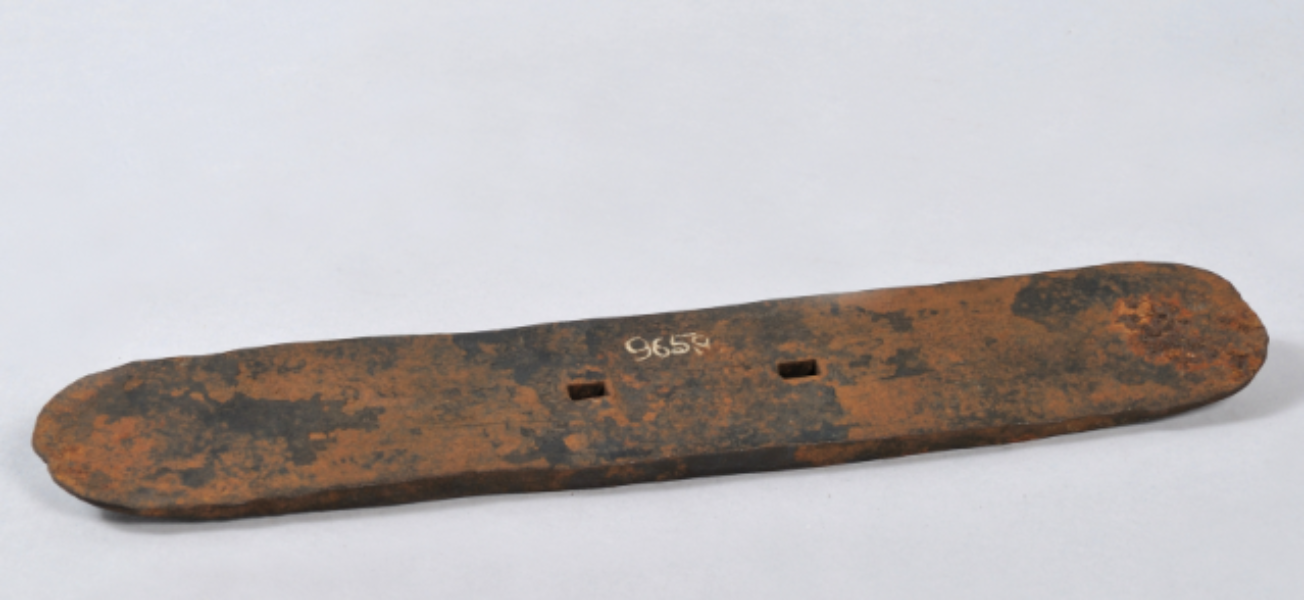State
Tribe Name
Art Type
short description
The rectangular hoe blade shown in the Indian Museum, an artifact representative of specific traditional practices among the Lothas. The iron hoe blade is marked with round and cutting edges, terminating in two small holes fitted at the center, where a wooden handle might have been attached, allowing various tasks like farming and weeding. Real Lotha society is agriculture-driven and much geared to essential activities with such tools like the hoe. This hoe blade's design implies that it was fastened to a wooden handle through holes in the center to facilitate tasks such as tilling and weeding.
Thumbnail

Filter Postion
Left
Filter Background
Off
Theme
Filter Header Image

content
Image

description
The rectangular hoe blade shown in the Indian Museum, an artifact representative of specific traditional practices among the Lothas. The iron hoe blade is marked with round and cutting edges, terminating in two small holes fitted at the center, where a wooden handle might have been attached, allowing various tasks like farming and weeding. Real Lotha society is agriculture-driven and much geared to essential activities with such tools like the hoe. This hoe blade's design implies that it was fastened to a wooden handle through holes in the center to facilitate tasks such as tilling and weeding.
The craftsmanship implies the tribe's metallurgical skill and how adept they were in making tools suitable to their agrarian lifestyle. Lotha Nagas are known for their intricate woodwork and metalwork, which extend beyond agricultural implements to include weapons and ceremonial items. Much scholarly writing has been done on their traditional governance structures and decision-making processes as examples of how a group has adapted and posited resistance against encroaching modernization directed toward eradicating traditions.
Image Mode
landscape
promoted
On
Verified
Off
